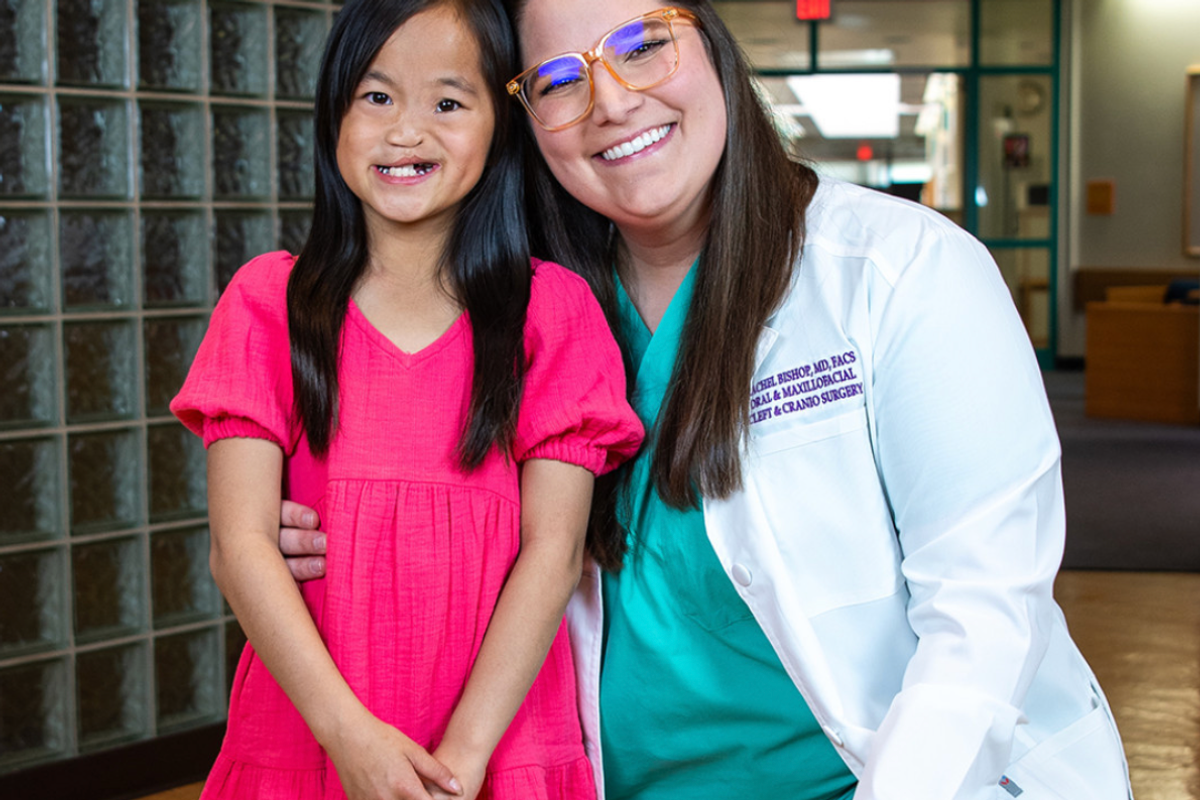Empowering Dreams: Chloe's Journey with Shriners Children’s
Thanks to specialized care, Chloe has a new smile — and the courage to show it to the world.
At first glance, you'll see Chloe brimming with enthusiasm: she loves piano, art class, and Sour Patch Kids. But behind her bright smile is a deeper story — one of resilience and strength.
Adopted at age 4, Chloe was born with bilateral cleft lip and palate, a complex condition that makes eating and speaking difficult. Chloe was home in the United States for only a month before her adopted family began setting up a care plan for her eventually leading to Shriners Children’s™.
For Chloe and her family, specialized care is about far more than repairing her cleft lip and palate — it’s about giving her the freedom to follow her dreams without anything holding her back.
Bridging Care Gaps
Like Chloe, approximately 1 in 1,700 babies in the United States are born with cleft lip and palate. While it might seem like a straightforward surgical issue, in reality it’s a complex condition that affects multiple systems of the body during all stages of a child’s growth. Shriners Children’s provides specialty care for cleft lip and palate, which can include surgeries, dental care, speech therapy, and more.
For Chloe’s condition, as well as many others, Shriners Children’s provides care, regardless of the families' insurance status or ability to pay. Thanks to generous donors, families whose children have complex conditions can access expert medical care as well as assistive devices, long-term rehabilitation, custom orthotics or prosthetics, and surgeries, among other things. In one year alone, Shriners Children’s performed more than 24,000 surgeries, 446,000 procedures, and welcomed 62,000 new patients. Donor gifts also help Shriners Children’s provide medical care at international outreach clinics, as well as provide telehealth services to children in underserved areas of the world.
A Future Transformed

Thousands of children who pass through Shriners Children’s receive care that transforms their health and their future. And Chloe — who now smiles and speaks confidently after multiple surgeries, therapy, and dental care provided by Shriners Children’s — is one of them.
“I want Chloe to be confident with herself and her speech,” said Casey, Chloe’s mom. “Shriners Children’s has gone a long way in helping us get there.”
Now, Chloe can pursue her dreams — big and small — with confidence. Whether she’s creating art and working toward her dream of becoming an art teacher, or hoping to travel to China to see where she was born, the care she received from Shriners Children’s has opened the door for her to chase any path she chooses.
For Chloe, Shiners Children’s has become more than just a hospital — it’s a place where her smile, her voice, her confidence, and all of her dreams can develop and grow alongside her.
Shriners Children’s helps children heal and thrive so they can chase their dreams. Learn more about how they’re making it possible here and share this article to inspire others to join you. Shriners Children’s relies on generous donors to make a difference.
Donate today during the 3X Match Challenge to make 3X the life-changing impact for patients.

